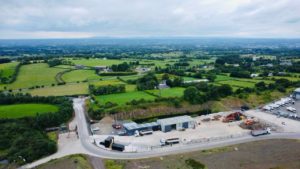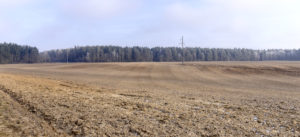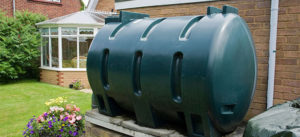More than half the material being sent to UK landfill sites is soil that is mostly contaminated. That is according to a special report by the Environment Agency.
The government department says more than 28 million tonnes of soil ends up in landfill every year. That is 55% of the total amount of landfill!
Contaminated soil attracts the standard rate of landfill tax, costing £94 per tonne. This means developers, builders and civil engineering firms are paying up to £2.6bn in landfill taxes alone each year. And that doesn’t include added expenses, such as using lorries to move the soil off-site to landfill.
But that doesn’t have to be the case. Here at ATG Group, we have developed an innovative approach, called LockedIn®. The treatment stabilises soil so it can be used as an engineering material. As a result, contractors can dramatically reduce their financial and environmental costs when developing sites containing contaminated soil.
No need for contaminated soil removal
Traditionally, any contaminated soil that isn’t sent to landfill is treated by remediation companies that remove the earth to carry out measures to treat it. As well as the journey from the site, the soil needs replacing with backfill. This is often a virgin aggregate, clocking up more miles, using up virgin materials and increasing further CO2 emissions. LockedIn®, however, allows treatment of the soil to be made without it being moved off-site.
Each LockedIn® treatment is a bespoke solution depending on the contamination, such as oil, asbestos or heavy metals. It not only treats petroleum hydrocarbons and metals but a wide range of contaminants, including PFAS, which are complex manufactured chemicals used in firefighting foams, non-stick cookware and also makes clothing and carpets stain-resistant.
ATG Group’s Cameron Pollock explains, “With our pioneering LockedIn® treatment, we keep everything on-site and safely ‘lock-in’ materials that contaminate the soil. It can then be used for structural fill, road sub-bases or as part of cut-and-fill, for example.
“This means the soil isn’t removed, which is a massive cost for land developers. Collectively, they have to pay for hundreds of lorries to take contaminated soil to landfill and as many lorries to bring aggregate to the site to use as fill material.
“Using traditional remediation results in a financial cost as well as environmental one due to the road transport needed to remove and replace it – whether that’s with the treated soil or new aggregates.”
Sustainable for environment and budgets
Governments are piling more pressure on land developers to reduce their CO2 outputs and be more sustainable. With the UK changing planning rules on brownfield sites for homes, a rise in the development of potentially contaminated land is likely.
Keeping the contaminated soil on-site for treatment will help construction companies increase sustainability and reduce CO2 levels, thanks to LockedIn®.
Cameron explains, “We started developing LockedIn® in 2015 and have since worked on many developments across the UK and Ireland. As well as treating the contamination, LockedIn® ensures that there is no leaching, so it is safe to retain the soil on-site for use within the development.
“This means any development company’s green credentials are improved as this is more sustainable and better for the environment. At the same time, they will see a more cost-effective solution to landfill or traditional remediation.”
How LockedIn® helped rail project
ATG Group is currently treating soil for a food company’s rail freight terminal in Scotland. It wants to reduce the number of lorries transporting its goods to reduce its CO2 footprint. This will also cut costs.
But when the company realised the hidden cost of removing contaminated soil meant it would reduce the effectiveness of the development.
The cost of removing contaminated soil, buying aggregate and then transporting each material would leave it spending more, which would barely reduce its CO2 emissions.
After visiting the site, we explained the soil could be stabilised and used on-site on a large base where a crane for lifting containers could be built. As a result, the plan was brought back to the table. We are now close to completing the work.
If you would like to know more about how LockedIn® can help your development, please get in touch with us.








